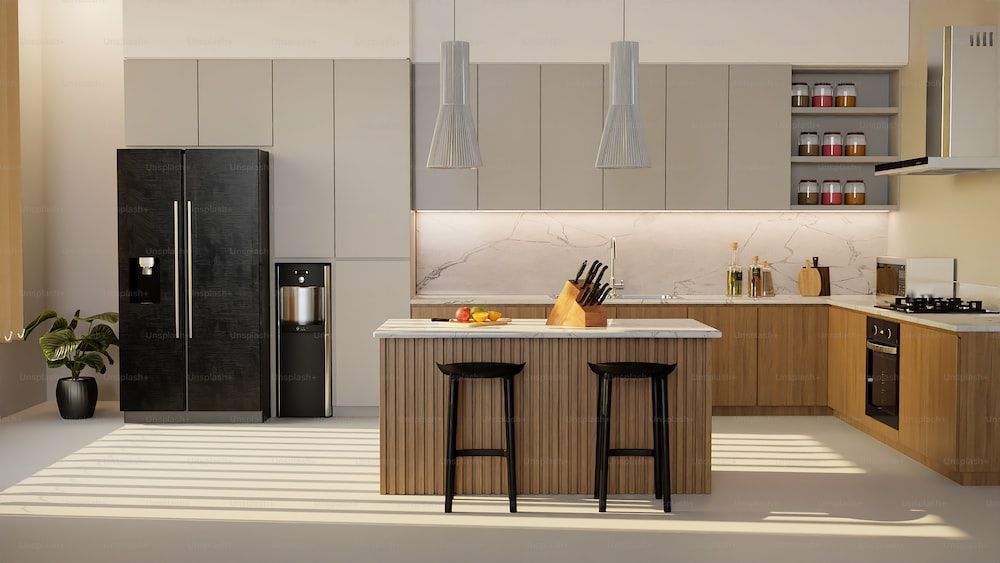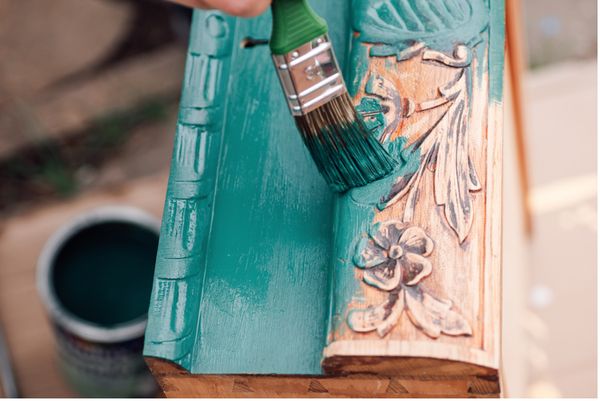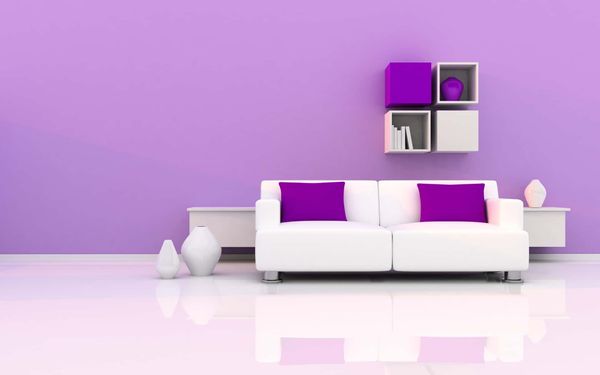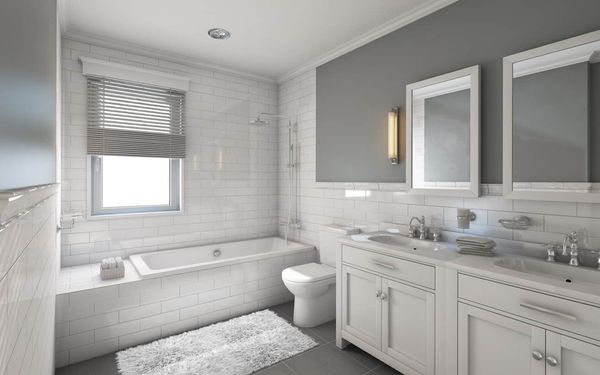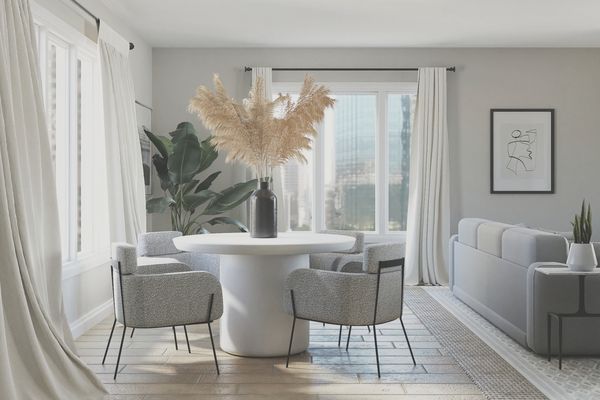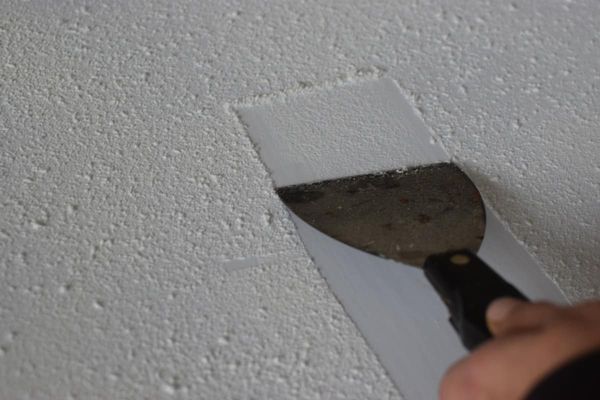Painting kitchen cabinets is one of the simplest, most cost-effective ways to transform your kitchen's look and feel. With a little time and elbow grease, you can give your cabinets a refreshing new look that suits your style.
To ensure your painted cabinets look professional and last for years, you need to follow some critical steps. Let's explore these steps in detail, along with helpful tips to make the job easier. Remember, a well-done paint job can significantly enhance the appeal and value of your kitchen.
Choosing the Right Paint and Tools
The first step in painting cabinets is to select the right paint. Oil-based paints are durable and easy to clean, making them a good choice for kitchen cabinets. However, they take longer to dry and may yellow over time. On the other hand, acrylic latex paints dry quickly and stay white.
You'll also need quality brushes and rollers to apply the paint evenly. A small angled brush is perfect for corners and detail work, while a foam roller ensures a smooth, flawless finish.
Prepping Your Cabinets
Proper preparation is key to a successful paint job. Start by removing all the hardware, such as knobs and pulls, from your cabinets. Then, thoroughly clean the surfaces with a mild detergent to remove grease and grime. Next, lightly sand the surfaces with fine-grit sandpaper to roughen up the finish, promoting paint adhesion.
Priming the Cabinets
Priming your cabinets before painting is crucial, especially if they are dark or stained. A primer helps the paint adhere better and ensures the original color doesn't bleed through. Choose a stain-blocking primer to deal with stubborn stains.
Painting the Cabinets
Now that your cabinets are prepped and primed, it's time to paint. Start with the cabinet frames, followed by the doors and drawers. Apply thin, even coats, and allow the paint to dry completely between coats. Two coats of paint are usually sufficient to achieve a rich, even color.
Reattaching the Hardware
Once the paint has completely dried, it's time to reattach your hardware. Be sure to align everything properly to ensure your cabinets function as they should.
The Art of Patience and Drying
When painting cabinets, it's critical not to rush the drying process. Giving the paint ample time to dry between coats helps prevent peeling, streaks, and drips, ensuring a professional finish. Depending on your paint type and the humidity level, drying times can vary, so it's best to follow the manufacturer's recommendations.
Maintaining Your Painted Cabinets
Once your cabinets have been painted, you'll want to keep them looking their best. Regularly clean them with a mild detergent to prevent buildup of grease and grime. Avoid abrasive cleaners or scrub brushes that can damage the paint. If you notice any chips or scratches, touch them up immediately to keep your cabinets looking fresh and new.
The Benefits of Painting Cabinets
Aside from the aesthetic boost, painting cabinets has other benefits too. It's an affordable way to update your kitchen without the expense and hassle of a full remodel. Plus, if you're thinking of selling your home, a fresh coat of paint can make your kitchen more attractive to potential buyers.
Expert Tips and Advice for Painting Cabinets
Here are some additional tips and advice from the experts to ensure a flawless cabinet painting project:
Plan Ahead
Before you begin, create a workspace that allows cabinet doors and drawers to lie flat while drying. This helps prevent drips and paint buildup around the edges.
Label Everything
Keep track of your hardware and doors by labeling them. When disassembling your cabinets, it's easy to mix up the pieces. Labeling helps to ensure that everything goes back in its original location.
Invest in High-Quality Paint
While it may be tempting to save a few dollars on cheaper paint, investing in high-quality paint can make a difference in the long run. Higher quality paints are more durable, provide better coverage, and often require fewer coats.
Use a Paint Sprayer
If you're comfortable with a bit more advanced equipment, consider using a paint sprayer. It can give your cabinets a smooth, professional finish without brush marks. However, it's essential to cover surrounding areas to protect from overspray.
Test Colors Before Committing
Before painting all your cabinets, it's a good idea to test the color on a small area or a single door. This way, you can ensure that you're happy with the color in different lighting conditions.
Protect Your Surfaces
Cover your countertops, appliances, and floor to protect them from paint splatters and spills. Using drop cloths or plastic sheeting can save a lot of cleanup time later.
Patience is Key
As mentioned earlier, patience is critical when painting cabinets. Rushing through the steps can lead to a subpar result. So take your time, follow the steps carefully, and enjoy the transformation of your kitchen.
Conclusion
Paint Cabinets
A successful kitchen cabinet paint job hinges on diligent preparation, careful execution, and the right tools and materials. Whether you're dealing with wood cabinets or laminate cabinets, it's crucial to fill in any imperfections with a wood filler and thoroughly clean the surfaces with a tack cloth before you start to paint kitchen cabinets. Choose your paint wisely — while oil-based paint offers durability, latex paint provides easy clean-up and dries quickly. For a flawless finish, consider using a spray paint technique, especially on cabinet boxes that may be harder to reach with a brush.
However, painting cabinets is more than just a cosmetic improvement. It's about enhancing your kitchen's aesthetic appeal, usability, and even increasing your home's overall value. From removing the cabinet door and hardware to applying the final coat of paint, each step you take contributes to the final result - freshly painted cabinets that reflect your personal style.
Whether you've revitalized your wood cabinets with a lustrous oil paint or breathed new life into your laminate cabinets with a vibrant latex paint, the transformation brought about by newly painted cabinets is indisputably worth the effort. So, let your creativity take charge and embark on the gratifying journey of a kitchen cabinet makeover today. Remember, patience, meticulousness, and quality materials are your best allies in achieving an outstanding finish.

